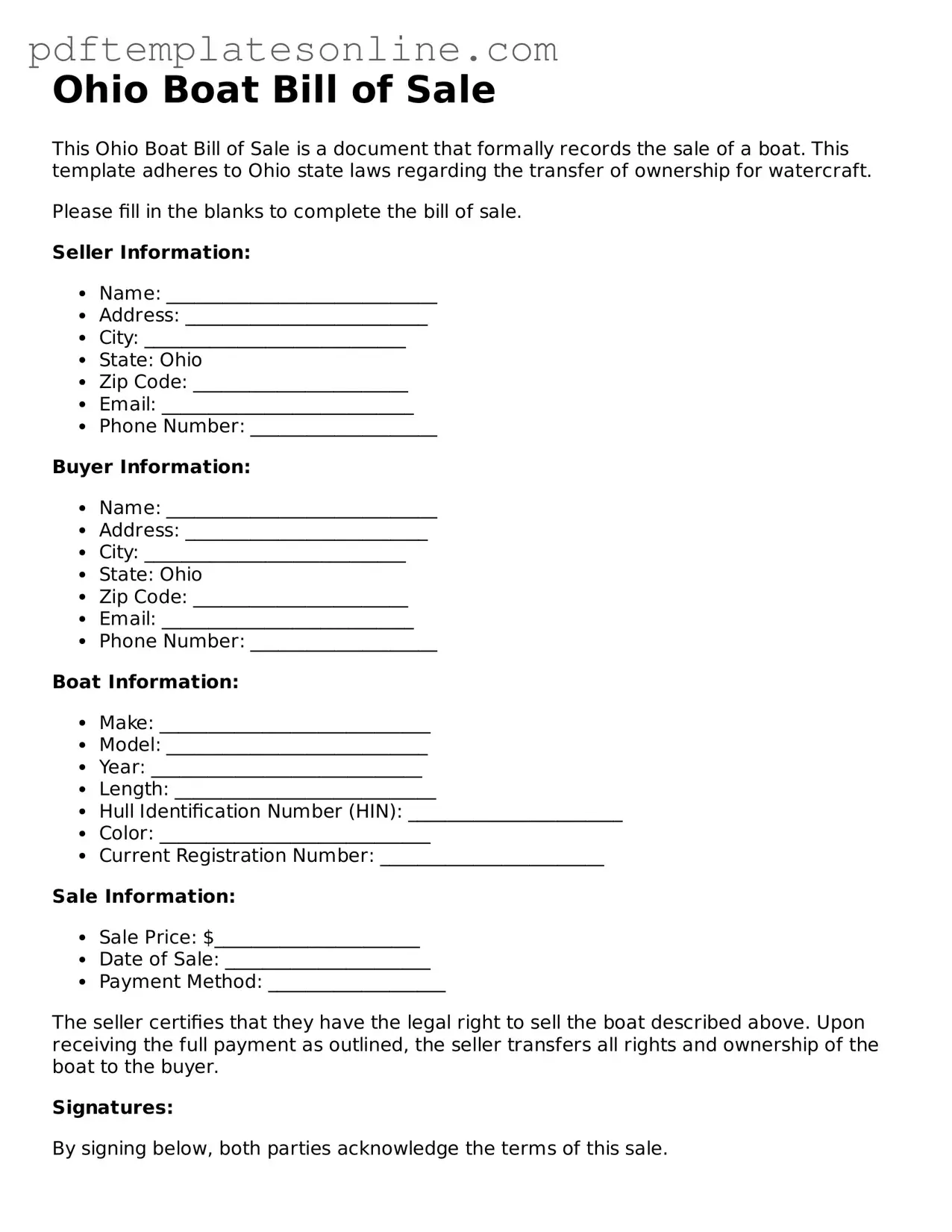When completing the Ohio Boat Bill of Sale form, individuals often overlook several important details. One common mistake is failing to provide complete information about the boat. This includes not only the make and model but also the hull identification number (HIN), which is crucial for identification purposes. Omitting this information can lead to complications when registering the boat.
Another frequent error is neglecting to include the date of the sale. This date is essential for both the buyer and seller, as it establishes the timeline for the transaction. Without it, there may be confusion regarding ownership and liability.
People sometimes forget to specify the purchase price. Leaving this section blank can create issues down the line, especially if there are disputes about the transaction. It's important to clearly state the amount agreed upon to avoid misunderstandings.
Signatures are also a common point of error. Both the buyer and seller must sign the document for it to be valid. Failing to do so can invalidate the sale, leaving both parties in a precarious situation. Additionally, not providing printed names alongside signatures can lead to further confusion.
Another mistake involves not keeping a copy of the completed bill of sale. After filling out the form, it’s wise for both parties to retain a copy for their records. This document serves as proof of the transaction and can be important for future reference.
Some individuals may use outdated forms or templates. It’s crucial to ensure that the most current version of the Ohio Boat Bill of Sale form is being used. Using an outdated form may result in additional paperwork or complications during the registration process.
Inaccurate descriptions of the boat's condition can also be problematic. If the condition is misrepresented, it could lead to disputes after the sale. It’s best to be honest and thorough when describing the boat to avoid any potential issues.
People sometimes overlook the requirement for notarization. While not always necessary, having the bill of sale notarized can provide an extra layer of security and legitimacy to the transaction. This step can be particularly beneficial if there are any disputes in the future.
Finally, failing to check for any additional state-specific requirements can lead to complications. Each state may have unique regulations regarding boat sales, so it's wise to familiarize oneself with Ohio’s specific requirements before finalizing the transaction.
